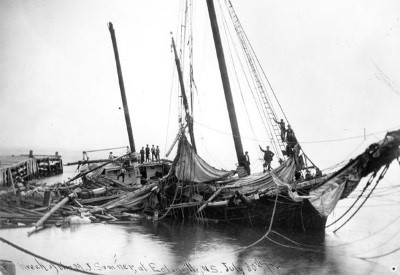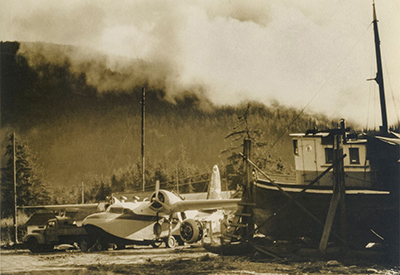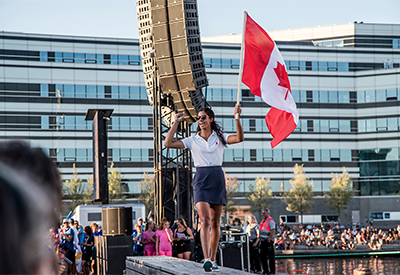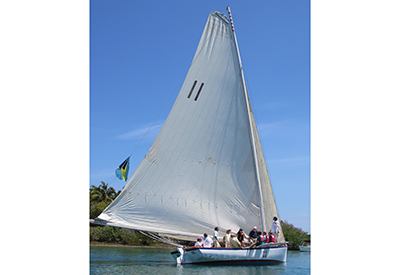150 Years of Canadian Boating – a brief history

Part 1 (1867 – 1914)
By: Owen Hurst
The history of boating in Canada is extremely rich and could easily fill the pages of numerous monographs.
Our 150 year history began in 1867, but Canada was no stranger to watercraft prior to our country’s confederation. Native Americans had long before built and perfected canoes for travel. The canoes were primarily birch-bark and were so effective for transportation that when the French and British began arriving in Canada in the 16th century they quickly adopted the expedient means of transportation.
Quickly the size and production of canoes grew to grant increased numbers of trappers and traders inland access to Canada’s vast expanse of rivers and lakes. The increased size of canoes and rapid production allowed for the transport of more furs to the coastal shipping lanes where ships waited to carry the furs to the lucrative European market. The first known canoe factory was set up in Trois-Rivieres, Quebec in the mid 18th century by the French. Perhaps the oldest surviving Canadian birch-bark canoe, known to many as ‘the grandfather canoe,” was made in the early 1800’s and only recently made its way back to Canada after having been shipped to Ireland in the early 19th century by the British military Capt. Stepney St George.

Canoeing, not just in Canada, also had a place as a precursor to ‘going parking’ among young, and some older couples, who took to recreational canoeing as a common past-time and a perhaps a chance for some ‘canoedling’.
Today canoeing is used less for transportation and more for recreation, but maintains a staple of Canadian outdoorsmanship and the primary means of penetrating many of Canada’s rivers, lakes and parks.
By the mid 19th century boating had penetrated all levels of society with the majority of people enjoying the use of canoes and pulling (row) boats. Boating clubs also became fashionable and
 numerous clubs were formed that catered to the various levels of society. In fact, one of the world’s oldest yacht clubs, The Royal Canadian Yacht Club, was founded in Toronto in 1852 and is still in operation today. It is interesting to note that it was called the ‘The Royal Canadian Yacht Club’ prior to 1867, but don’t forget that from 1841 – 1867 much of what is today Ontario and Quebec was the Province of Canada under British control.
numerous clubs were formed that catered to the various levels of society. In fact, one of the world’s oldest yacht clubs, The Royal Canadian Yacht Club, was founded in Toronto in 1852 and is still in operation today. It is interesting to note that it was called the ‘The Royal Canadian Yacht Club’ prior to 1867, but don’t forget that from 1841 – 1867 much of what is today Ontario and Quebec was the Province of Canada under British control.
By the time of Canadian confederation in 1867 a strong boating culture was present in Canada that laid the foundation for one of our country’s most prominent recreation activities. Right from the start we, as newly founded Canadians, spent our time on the water for recreation, transport, fishing, and competition.
Mere months after our country was officially founded a team of Canadian rowers from Saint John New Brunswick went to Paris for the World Expedition, winning both fours events by edging out the favoured American and British crews.

The fishing industry in eastern Canada also played a role in the rise of boating culture in Canada, and the region today remains a driving force in the industry.
By the mid 1870’s Canadian fisherman dominated the fishery industry, with Newfoundland’s fleet estimated at about 18,000 smaller boats and 1,200 larger vessels.
The steam engine further pushed the industry forward, but it was the introduction of gas engines that really propelled the industry, both recreationally and commercially, and laid the ground work for the outboard motors we still use today. Gas engines allowed smaller boats to gain mobility and eventually speed, which we will see in part 2 was the precursor to a myriad of motor boat related sports and recreation activities.

Production of outboards started in the United States and what is generally considered the first outboard was produced by Cameron B. Waterman in 1906; 25 models were sold that year. By 1909 the Evinrude Rowboat Motor Company had been formed by Ole and Bess Evinrude. And as we will see in part 2 by the 1920’s outboard motors were common to Canada and as technological advances were made the new sport of powerboat racing began to entrance well-to-do Canadians.
Part 2 will cover the years 1914 – 1944.
Literary sources:
- https://maritimemuseum.novascotia.ca/
- www.canoe.ca
- http://rcyc.ca/Splash
- rowingcanada.org
- www.fishharvesterspecheurs.ca
- http://www.cbc.ca/news/canada/new-brunswick/birchbark-canoe-thought-to-be-among-world-s-oldest-returns-to-n-b-1.767268
Image sources in order of appearance:
- Marjorie J. Summer – (Maritime Museum of the Atlantic, MP.189.2, N-14, 079, M1999.13.30)
- Dartmouth – (Maritime Museum of the Atlantic, MP22.6.1)
- Canoedling – http://www.collectorsweekly.com/articles/love-boats-the-delightfully-sinful-history-of-canoes/
- Paris Rowing Crew, (courtesy of: National Archive), http://rowingcanada.org/about-us/our-history
- Evinrude Historical Timeline, http://www.evinrude.com/en-US/innovation-technology/timeline.html
 Meet Owen Hurst
Meet Owen Hurst
Not only is Owen an avid boater but he is also an enthusiastic historian with a Master’s degree in Classical Studies. He takes pleasure in research and applying his love of history with his passion for boating.
There is little he enjoys more than an early morning coffee and book on the deck of his home on the shore of Georgian Bay.
Contact: owenhurst@Kerrwil.com





























